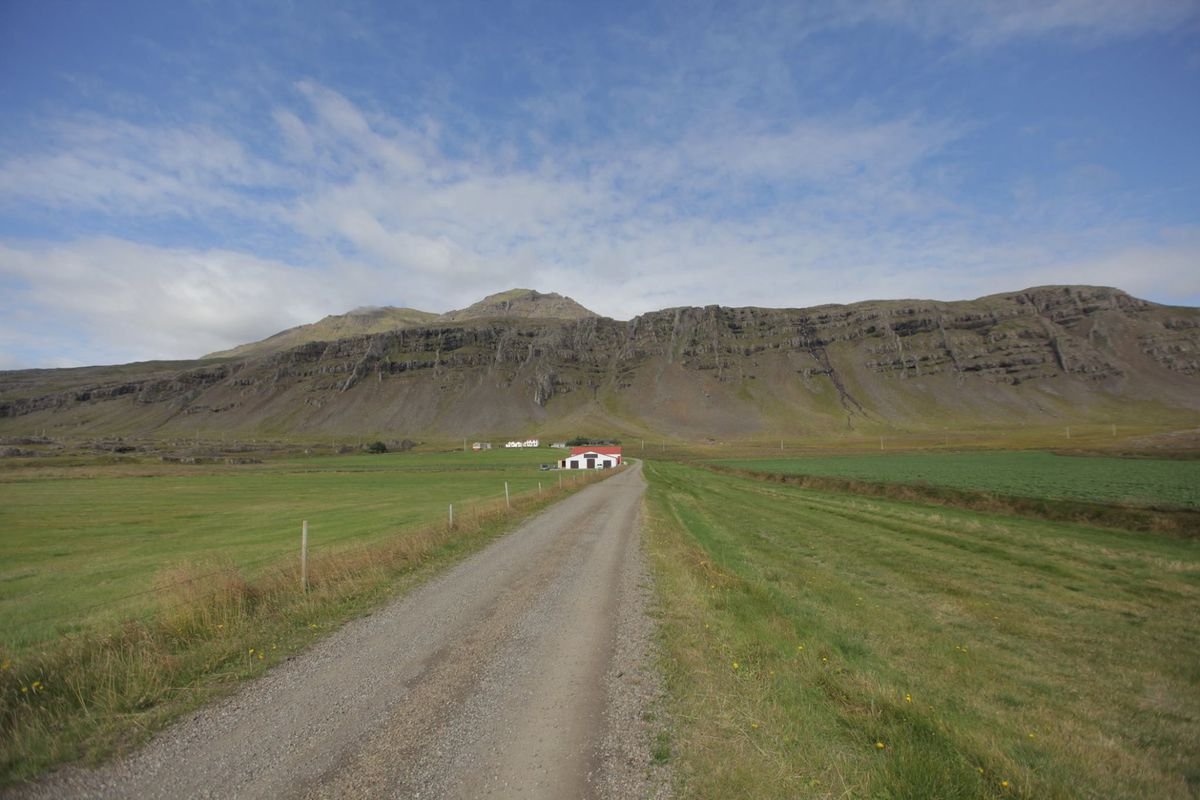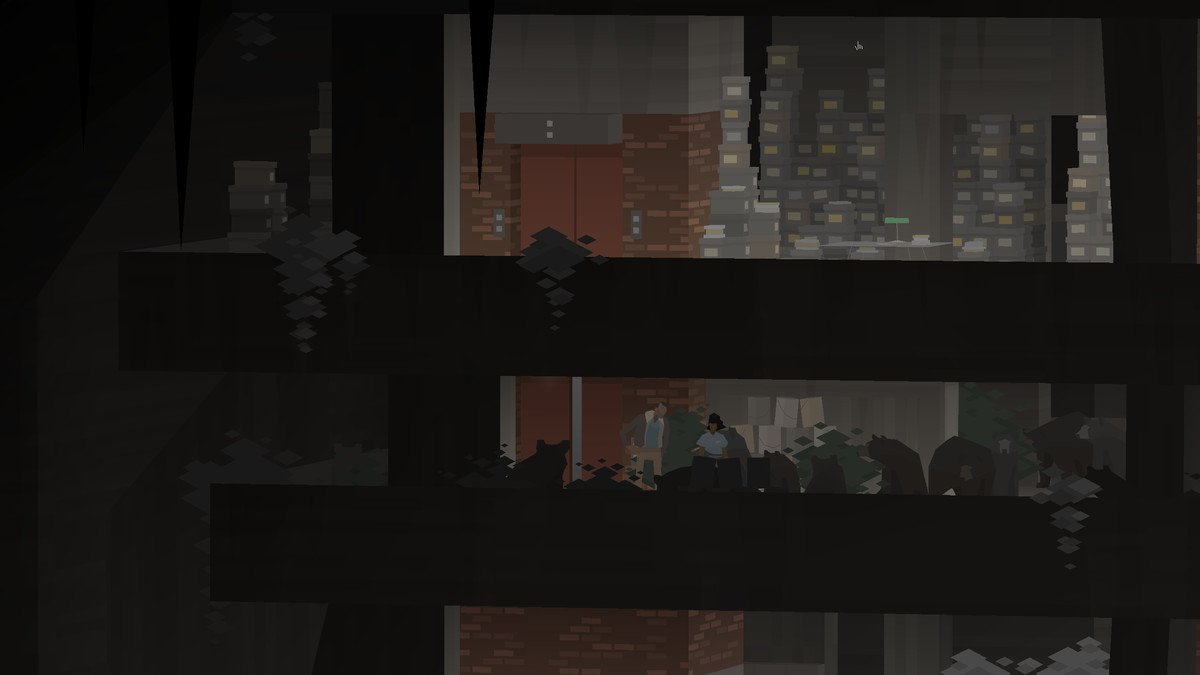When I think of Kentucky Route Zero, I think back to an unexpected barn.
Back in 2016, my wife and I traveled around Iceland for our honeymoon.
Our plan was to drive the Ring Road, an 800-mile loop that circles the island nation. Each day we’d finish off another chunk of the road in our rented compact car, spending the night in a different travelers’ hotel or Airbnb.
Iceland, as you’re probably aware, is stunningly gorgeous. Its landscapes, “recently” crafted by volcanic outpourings, vary from sloping green valleys to surfaces so convincingly lunar that the astronauts originally trained there before the Apollo moon landings. I remember feeling a constant desire to pull off to the side of the road whenever we went around a bend, sure that the magnificent view before us could never be bested. Yet I’d be proven wrong, time and time again, another mile down the road.
At a certain point, it became clear that we’d have to be judicious in our detours, as we were on a timeline and 800 miles is a long way to go. We became more picky about our stops.
One of the longer single drives was between the small towns of Vik and Höfn, at just over three hours. We couldn’t find anywhere to stay between the two towns, so we decided to push through that stretch of road, even though it was getting to be late in the day. We agreed to keep the stops minimal during that span, but about halfway through, we needed a bathroom break.
With no gas stations or restaurants for miles, we were stumped. But then we spotted a long driveway leading to a dusty barn nestled in the foothills of some igneous palisades. At the entrance to the driveway, there was a single small sign. “Music,” it read. Surely, where there’s Music, there’s also a bathroom.

We took it slow over the unpaved driveway, our shitty rental struggling to maintain traction as gravel shot upward and outward. We parked in front of the barn and got out. It was silent. Just the whistle of the wind rushing across the cliffside. No other traffic, no other people, and certainly no Music. But the barn’s door was open. Within: either relief or guaranteed murder.
As our eyes adjusted to the light, we found a single bearded man, standing at a makeshift bar, in a barn that had clearly been converted into a music venue. He was in his 30s, tattooed around the neck and arms, doing the sorts of things bartenders do while the place is empty: cleaning glasses, wiping down the bar. He seemed thrilled to have company.
“Welcome! You guys hungry?” he asked. My wife excused herself while I made small talk.
There were a dozen small tables in the barn, and a stage littered with instruments. The bartender said the place hosts bands every week in the summer, and asked if I wanted to try one of his vegan hot dogs. (Icelanders, as it happens, are very proud of their hot dogs.) I agreed as my wife returned. We sat with the bartender, asking the usual traveler questions. He told us about how he plays drums and rhythm guitar, but couldn’t sing a lick. Soon we drifted back into the silence of the place while munching on a pretty decent facsimile of a hot dog.
And then we were back on the road to Höfn.
Kentucky Route Zero is a narrative game about a journey, but it’s also about debt, academia, gentrification, alcoholism, and joy. It begins simply, with a truck driver at a gas station trying to find an address (5 Dogwood Drive). The game uses a text scroll, akin to what you’d see in old point-and-click adventure games of the ’90s. It’s mostly played from a side-scrolling perspective, allowing me to walk up and inspect objects or talk to various people. As Conway, the driver, I examine my truck and a nearby dog (“An old hound in a straw hat. Both have seen better days.”)
I talk to a gas station attendant, who asks what the dog’s name is. I’m presented with three options:
- “His name is Homer.”
- “Her name is Blue.”
- “Just some dog. I don’t know his name.”

Image: Cardboard Computer/Annapurna Interactive
These are the sorts of interactions that exist throughout Kentucky Route Zero. The game has a story to tell, but as a player I can tweak moments to give the tale a personal touch. These choices won’t make a major impact on how the events of the game turn out, but they might let me learn something new about a specific character. In the dog’s case, his or her name will remain the same throughout the journey, depending on what I pick.
I can also do nothing at the gas station and just stand there for a few minutes. Crickets chirp in the distance as the sun slowly sets over a nearby hillside. Occasionally a car will motor by, the rolling sound of asphalt on pavement slowly fading away. Kentucky Route Zero is filled with scenes like this, handcrafted to create a sense of quiet contemplation, like wind rushing across a cliffside.
Some of them are as familiar as a quiet gas station at sunset, but others are far more bizarre: a museum featuring exhibits on abandoned houses, a battleship overrun by cats, or a clerical office of silent, hardworking bears. A how-did-this-get-here vibe makes each new step on the road exciting and mystifying. And within each venue, there’s someone new to talk to, to understand.
It’s worth noting that Kentucky Route Zero is not a game in the traditional sense. There aren’t really puzzles to solve, or doors to unlock with secret keys. The hardest challenges it ever throws at you are related to roadside directions and not much else. The closest analog would be a very high-quality visual novel, with slight interactivity blended into the gorgeous artwork.

Image: Cardboard Computer/Annapurna Interactive via Polygon
Without any traditional “challenge,” you’re left to uncover the way of this world and its people. The bizarre otherworldliness — D&D-playing ghosts and omnipresent bluegrass bands — is never fully explained. I’m rarely given a clear answer about what’s going on, or why, even after I try to pry into these matters. The people who inhabit this world seem to be guessing about what it all means, just as I am.
But, despite the nontraditional atmosphere, the circumstances of these people’s lives are acutely relatable. An office worker dreams of getting a grant to fund her artwork. A child deals with his parents abandoning him. A couple struggles under the weight of crushing debt. A monopolistic company destroys local communities and businesses to amass more wealth.
These themes only grow darker and more ominous as the journey progresses, but there’s also a levity to Kentucky Route Zero that keeps the experience from becoming a full-on torture chamber. I meet people who are managing to keep on in the face of misery, finding joy in the small things.

Image: Cardboard Computer/Annapurna Interactive via Polygon
There’s the rocker duo, Junebug and Johnny, who just want to play their music, even if it’s at a terrible dive bar. They stumble upon Conway and the small band of friends who have joined his quest to find 5 Dogwood Drive. The duo is thrilled to have a potential audience — so thrilled that the musicians agree to fix Conway’s busted truck in exchange for the gang sitting and listening to them play.
By this point, the story has taken several dark turns and Conway’s travels are looking more doomed by the second. While much of the game is nearly silent, save for ambient noises, it will occasionally dip into musical interludes, like an electric synth tune from Junebug and Johnny. The pair plays a dreamy song as the roof lifts off the dive bar and the stars come out.
These moments run in contrast to the dour silence of the rest of this world, delivering emotionally charged sequences that lift the spirits of not only the cast of characters, but me as well. I can’t help but tear up. I think back to the barn.
While the traditional point-and-click adventure format makes up the bulk of Kentucky Route Zero, the game’s strongest segments exist as intermissions that break up the main story. These sequences focus on side characters and themes that will eventually become important in the main story, though at the time you experience them, they seem totally disconnected from what’s currently going on.
One is a recreation of an art exhibit by one of the in-game characters. Another is a full-on stage play where you can follow multiple perspectives (the actors, the director, the audience) at once. Another takes place from the perspective of a producer of a local cable access interview show. You can even experience one of them for yourself by dialing a phone number: 270-301-5797.
These interludes work because they take established formats that exist in our real world and twist them to fit the bizarre, otherworldly tone of Kentucky Route Zero.
On its surface, Kentucky Route Zero appears to be hyper-traditional. The game begins; I’m given a clear objective; I’m going to see this through. Along the way, I meet people who can help me on this quest. But the truth is that the quest is not the point. It’s the people, the world, the journey itself that all make this game tick.
The complete edition of Kentucky Route Zero will be released Jan. 28 on Linux, Mac, Nintendo Switch, PlayStation 4, Windows PC, and Xbox One. The game was reviewed on Nintendo Switch using a final “retail” download code provided by Annapurna Interactive. You can find additional information about Polygon’s ethics policy here.
























































